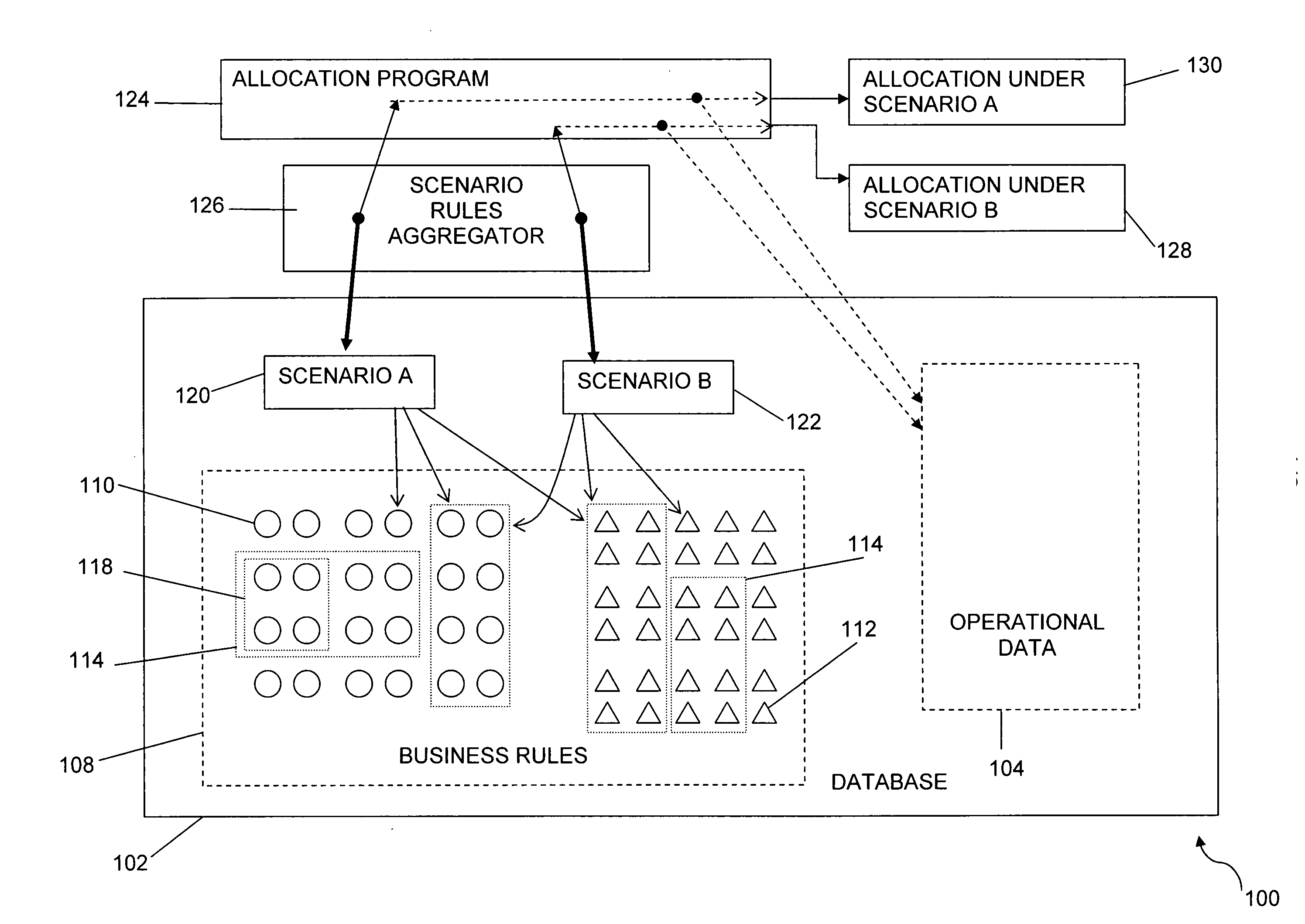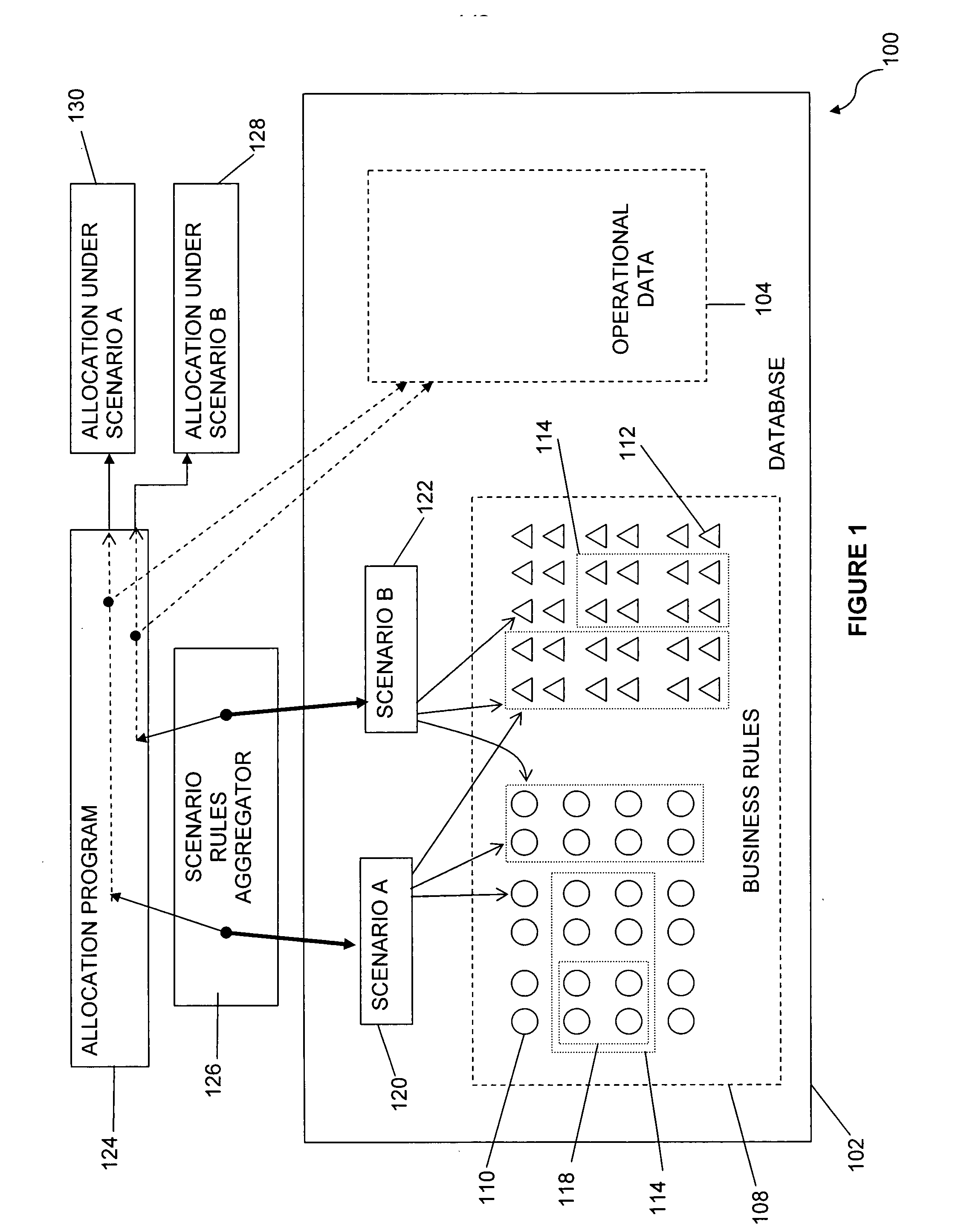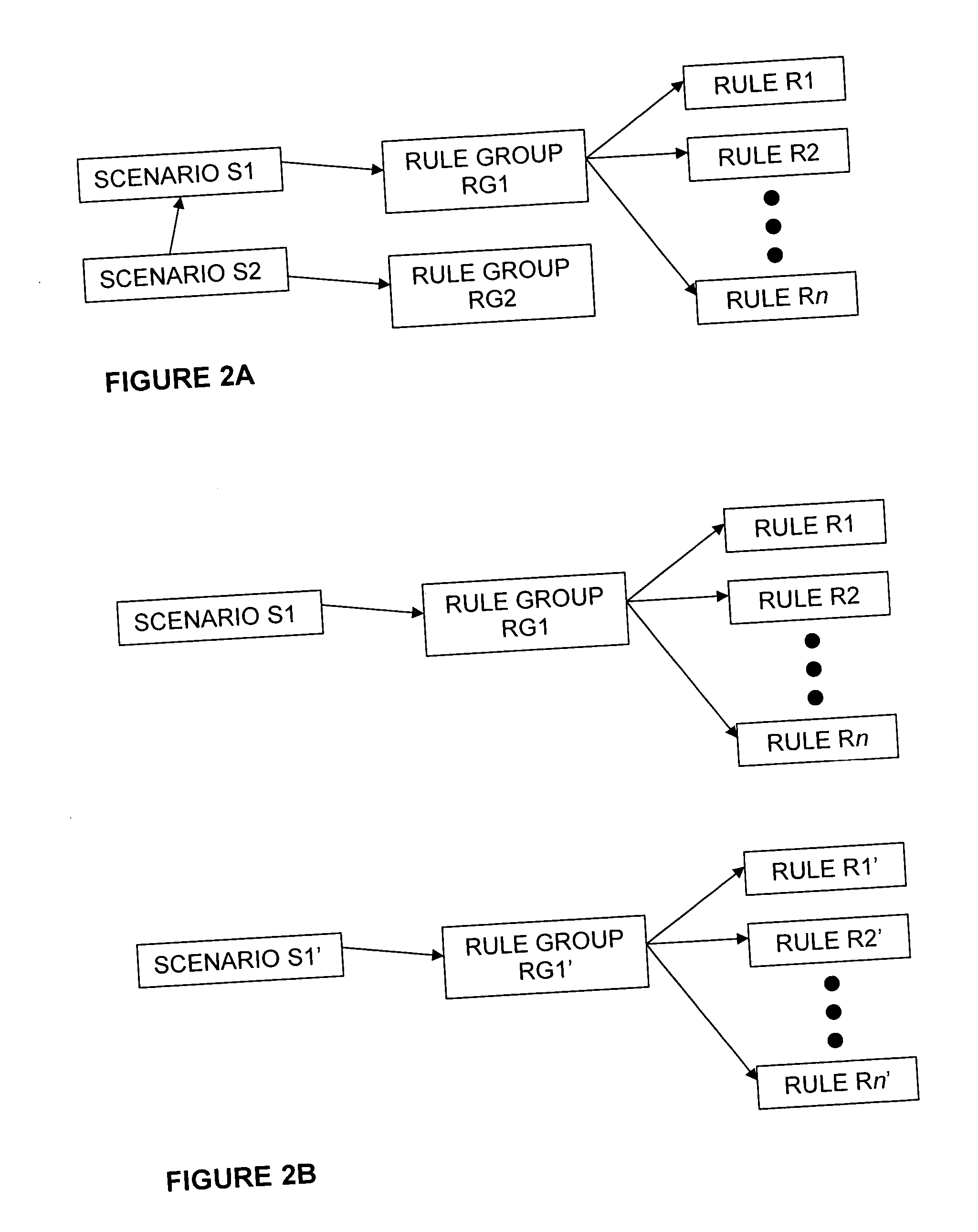Scenario editors and scenario rules aggregators for resource-allocation systems
a resource-allocation system and scenario editor technology, applied in the field of scenario editor and scenario rule aggregator for resource-allocation system, can solve the problems of difficult to change constraints and operational conditions, inability to quickly achieve manual resource allocation, and limited existing resource-allocation systems, so as to facilitate the adjustment of constraints and operational conditions.
- Summary
- Abstract
- Description
- Claims
- Application Information
AI Technical Summary
Benefits of technology
Problems solved by technology
Method used
Image
Examples
example 1
[0055] Pattern: The current stand is Stand 21, the time is after 10:30, and the aircraft is a 747-400
[0056] If the pattern is matched, then assign a penalty of 1000.
This rule makes it unacceptable to assign a 747-400 aircraft to Stand 21 after 10:30.
[0057] An example of a conflict constraint rule is:
example 2
[0058] Pattern #1: The current stand is Stand 41 [0059] Pattern #2: Stand 40 is not open, and the aircraft at stand 40 is a DC9, a 737-200, or a 737-300.
[0060] If the pattern is matched, then assign a penalty of 1000. This rule makes it unacceptable to assign any aircraft to Stand 41 at the same time that there is a DC9, a 737-200, or a 737-300 assigned to Stand 40.
[0061] Conditional rules may also be used to assign preferences for particular resource allocations that are not unacceptable, but that are undesirable to varying degrees. For example, in the context of resource allocation at an airport, if Air France prefers its flights to be assigned to gate A7 or A9, a simple constraint rule may be created as follows:
example 3
[0062] Pattern: The current airline is Air France, and the Gate is not A 7 or A9
[0063] If the pattern is matched, then assign a penalty of 20.
[0064] The higher the penalty value, the stronger the preference, and the more likely an optimized resource allocation will be in accordance with the preference. An exemplary embodiment of a database entry expressing the above rule is illustrated in FIG. 3.
[0065] Another example can illustrate the interplay between defined resource rules and rules groups with constraints. If the airport has a number of stands that are not associated with gates in passenger terminals, the resource-allocation system can be made to ensure that cargo flights are assigned to these remote stands using a resource rule group including all of the remote stands and applying the following simple constraint rule:
PUM
 Login to View More
Login to View More Abstract
Description
Claims
Application Information
 Login to View More
Login to View More - R&D
- Intellectual Property
- Life Sciences
- Materials
- Tech Scout
- Unparalleled Data Quality
- Higher Quality Content
- 60% Fewer Hallucinations
Browse by: Latest US Patents, China's latest patents, Technical Efficacy Thesaurus, Application Domain, Technology Topic, Popular Technical Reports.
© 2025 PatSnap. All rights reserved.Legal|Privacy policy|Modern Slavery Act Transparency Statement|Sitemap|About US| Contact US: help@patsnap.com



